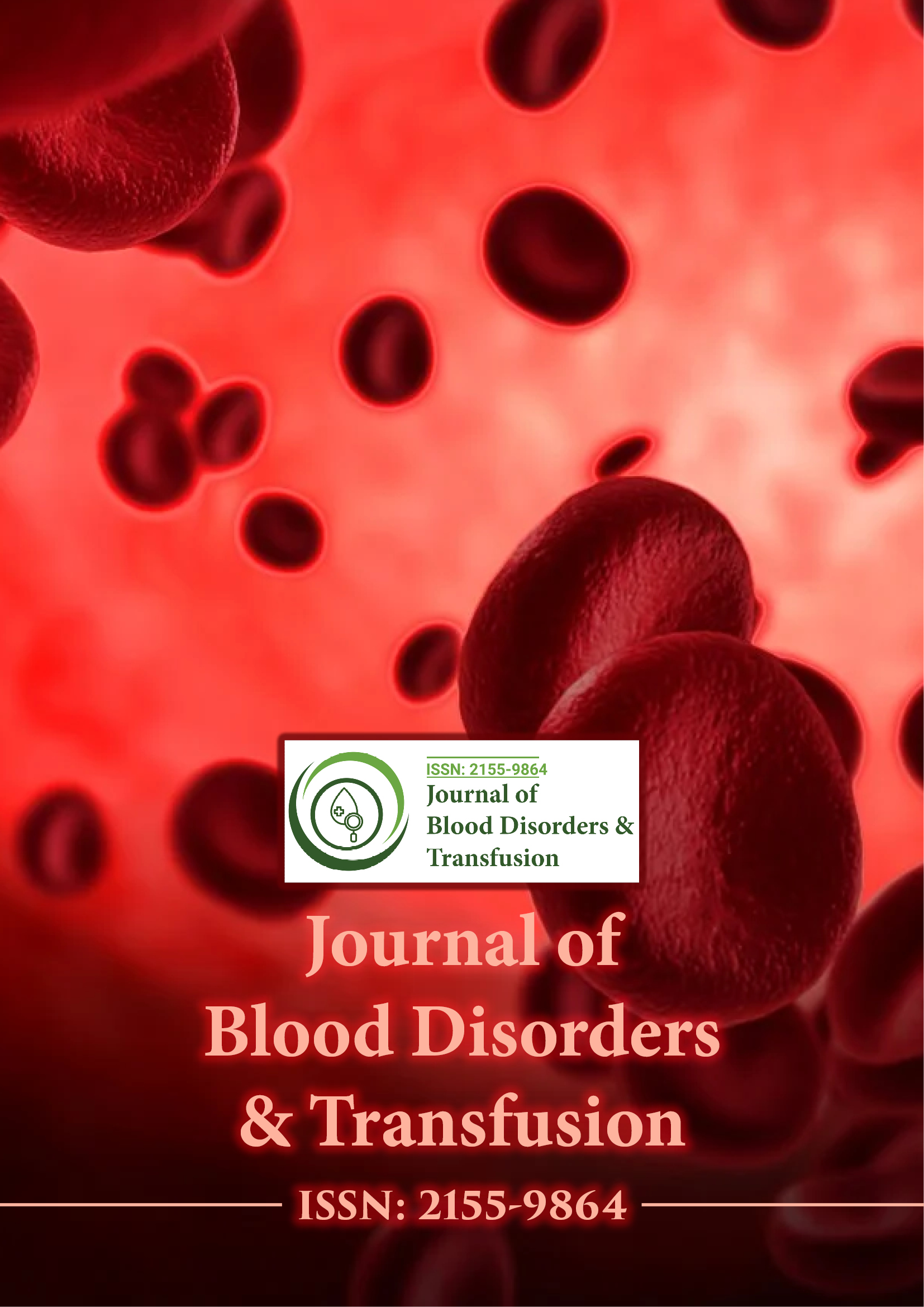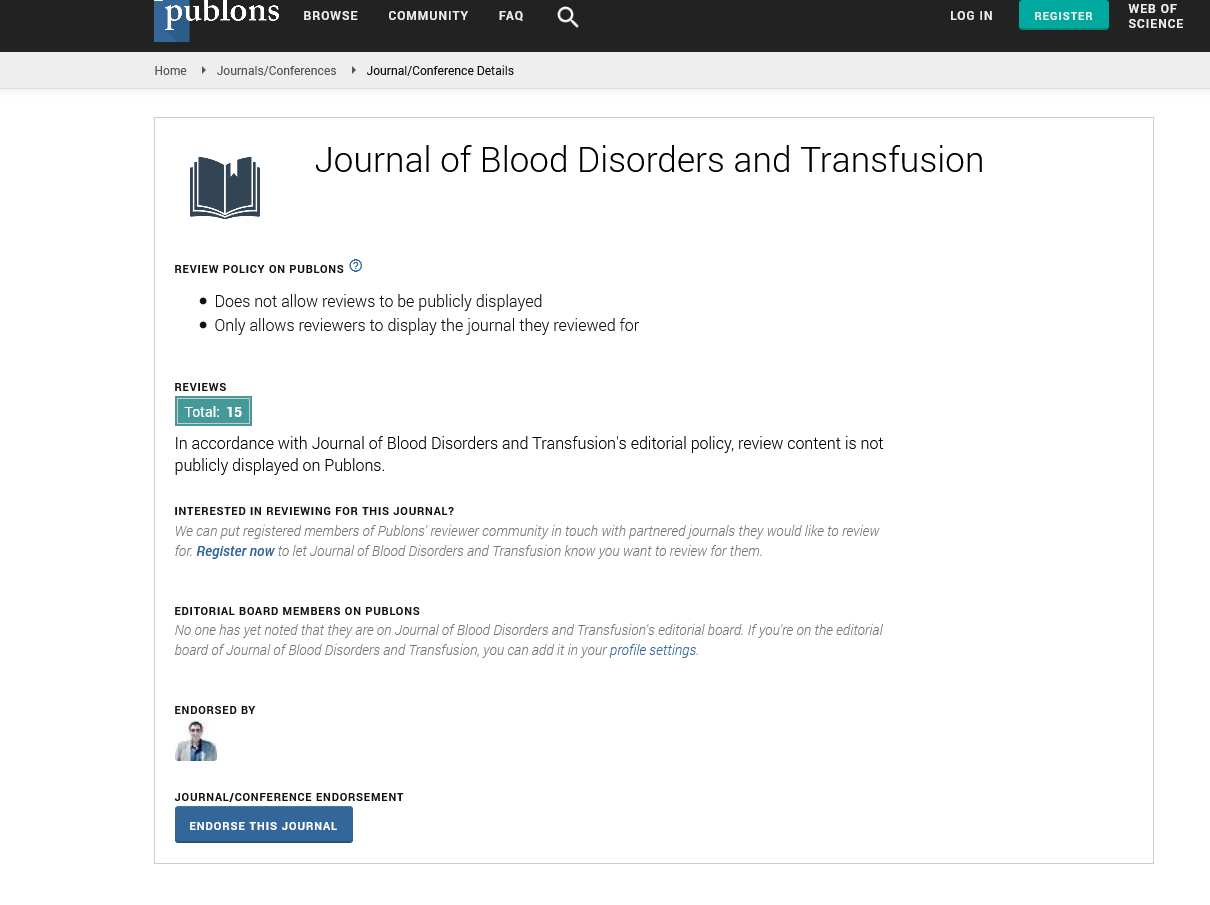Indexed In
- Open J Gate
- Genamics JournalSeek
- JournalTOCs
- Ulrich's Periodicals Directory
- RefSeek
- Hamdard University
- EBSCO A-Z
- OCLC- WorldCat
- Proquest Summons
- Publons
- Geneva Foundation for Medical Education and Research
- Euro Pub
- Google Scholar
Useful Links
Share This Page
Journal Flyer

Open Access Journals
- Agri and Aquaculture
- Biochemistry
- Bioinformatics & Systems Biology
- Business & Management
- Chemistry
- Clinical Sciences
- Engineering
- Food & Nutrition
- General Science
- Genetics & Molecular Biology
- Immunology & Microbiology
- Medical Sciences
- Neuroscience & Psychology
- Nursing & Health Care
- Pharmaceutical Sciences
Impact of natural killer (NK) cell KIR ligand mismatch and B score on the outcome of haploidentical transplantation with post-transplantation cyclophosphamide (PTCY) in aplastic anemia
2nd International Conference on Hematology & Blood Disorders
September 29-October 01, 2014 DoubleTree by Hilton Baltimore-BWI Airport, USA
Sarita Rani Jaiswal and Suparno Chakrbarti
Scientific Tracks Abstracts: J Blood Disorders Transf
Abstract:
Introduction: The synthesis of foetal haemoglobin (HbF) starts at the end of the third month of gestation and constitute about 90?95% of the total haemoglobin (Hb) content with HbA accounting for the remaining 5?10%. At birth, 55?65% of the total Hb synthesised is HbF. Thereafter, the synthesis of HbF decreases much more rapidly than adult haemoglobin. The frequency of foetal haemoglobin (HbF) and haemoglobin (Hb) levels were determined among 108 subjects with different Haemoglobin genotypes in Calabar, Nigeria between March 2013 and March 2014. Methods: Hb- genotype was determined using cellulose acetate method, while HbF and Hb were estimated using modified Betke alkaline denaturation method and cyanmethaemoglobin techniques respectively. Result: Haemoglobin genotype SS individuals had the highest mean HbF concentration of 3.05?1.61) as compared to AA and AS subjects with means of 0.195?0.25 and 1.072?0.98 respectively. This relationship was statistically significant (P<0.02). On the other hand, AA subjects had the highest mean haemoglobin concentration (12.79?1.19) while SS subjects had the lowest (10.65?2.06). Conclusion: This study has indicated the persistence of HbF into adult life in this locality, since HbF is associated with natural anti-sickling properties, its role as a monitoring factor in the management of sickle cell anaemia is examined in details.

